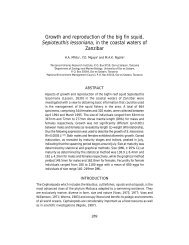gpa_east_africa_case.. - GRID Africa GeoPortal - UNEP
gpa_east_africa_case.. - GRID Africa GeoPortal - UNEP
gpa_east_africa_case.. - GRID Africa GeoPortal - UNEP
You also want an ePaper? Increase the reach of your titles
YUMPU automatically turns print PDFs into web optimized ePapers that Google loves.
EXECUTIVE SUMMARY1. Objectives of the ReportThis Report addresses three main overlapping objectives concerning the application of Cost-Benefit Analysis to wastewater actions: methodological, capacity-building and decisionmakingobjectives:• Methodological objective: To develop, present, clarify and put forward for further usethe steps, concepts and practical data issues involved in the application of Cost-BenefitAnalysis to three East <strong>Africa</strong>n <strong>case</strong> studies (Mombasa, Dar-es-Salaam and Beau Vallon-Seychelles).• Capacity-building objective: To demonstrate the main requirements for and the outputsof measuring the costs of environmental impacts and the benefits from investmentresponses, and the contributions to the improvement of capacities for problemidentification and the evaluation of priorities for the design of wastewater managementstrategies.• Decision-making objective: To identify the merits and limitations of Cost-BenefitAnalysis as a vehicle for fostering participation, partnerships and co-operation in thedecision-making process for addressing coastal and marine pollution from land-basedmunicipal sources.This Report serves the above objectives in two main ways:First by the development and presentation of the three Cost-Benefits Case Studies ofMombasa, Dar-es-Salaam and Beau Vallon (Seychelles) on municipal wastewater, whichillustrate concepts and measurement techniques for identifying and estimating costs andbenefits.Second by drawing upon the conclusions of the Case Studies to propose strategicprogramme activities to improve capacities for Cost-benefit Analysis and incorporateeconomic valuation tools into the decision-making process.2. The Structure of the ReportThe structure of the Report is designed to reflect the above objectives. The Report is dividedin three main Chapters:Following this Executive Summary, Chapter 1 sets up the context for the Case Studies. Itintroduces the conceptual framework of Environmental Economics and outlines thetechniques and objectives of Cost-Benefit Analysis in relation to environmental management.Chapter 2 is the core section of the Report. It presents the three Case Studies on Mombasa,Dar-es-Salaam and Beau Vallon (Seychelles), elaborates the approach to and the estimationof costs and benefits, comments on the data problems encountered and draws together theconclusions reached.Each <strong>case</strong> Study is prefaced by a short introduction to the city context, drawn and edited fromthe National Reports. More detailed background information is included in three separateAnnexes at the end of the Report.Chapter 3 puts forward Action Programme Proposals deriving from the broader issues ofCost-Benefit Analysis, particularly the need to improve its effectiveness and strengthen itscontributions to future programme actions.This Report format aims to draw out and highlight the Cost-Benefit Analysis CaseStudies in Chapter 2, after Chapter 1 which provides methodological support for thedevelopment of the Case Studies, followed up by Chapter 3 which picks up the lessonsfrom the Case Studies to put together Programme Proposals.Final Draft Report – Cost Benefit Case StudiesGPA Strategic Action Plan on Sewage, October, 20001


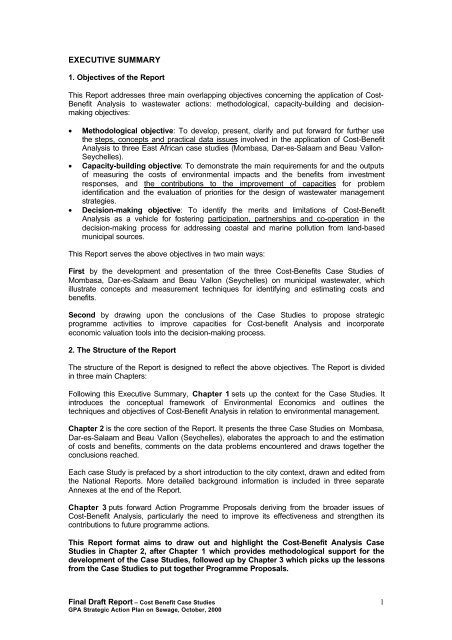
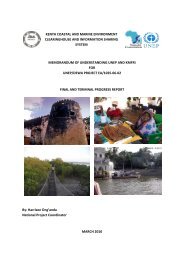
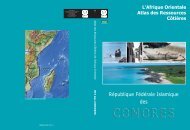
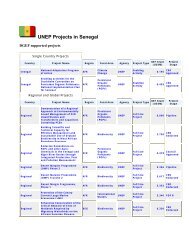

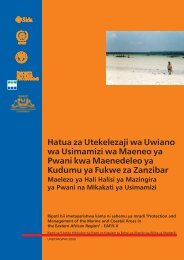
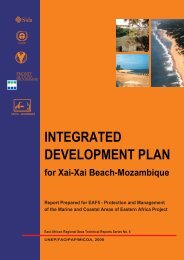
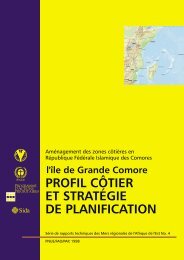
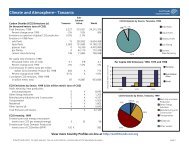

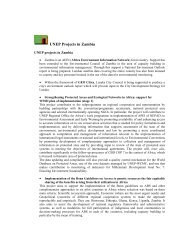
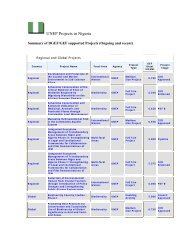
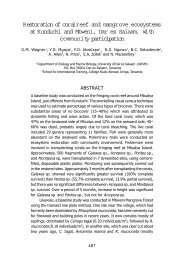
![Please Click to download [English] - GRID Africa GeoPortal - UNEP](https://img.yumpu.com/30633391/1/184x260/please-click-to-download-english-grid-africa-geoportal-unep.jpg?quality=85)
